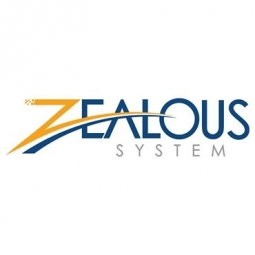Download PDF
Digital Transformation of Government Student Extracurricular Activities Module in Norway

Technology Category
- Application Infrastructure & Middleware - Data Exchange & Integration
- Platform as a Service (PaaS) - Application Development Platforms
Applicable Industries
- Cities & Municipalities
- Education
Applicable Functions
- Product Research & Development
- Quality Assurance
Use Cases
- Experimentation Automation
- Perimeter Security & Access Control
Services
- System Integration
- Testing & Certification
The Challenge
Vadso Municipality in Norway offers extracurricular activities for its citizens, with parents having the ability to enroll their children and receive a subsidy on the fees. However, the program’s availability and enrollment process was not accessible through any digital means. Parents had to manually search for available activities and contact the responsible agency to enroll their children. To claim the subsidy, parents had to visit different departments and submit various documents and forms. This cumbersome process limited the program’s reach. The client wanted a technology that could digitize the entire process, creating a web application that enables parents to explore the activities and enroll their children. The biggest challenge was to understand the entire process and the existing technology that the Vadso Municipality had employed. Developers had to deal with various complex scenarios like different enrollment requirements and eligibility criteria for subsidies. Language barrier and integration with other systems were additional difficulties.
The Customer
The Municipality of Vadso
About The Customer
The customer in this case study is the Vadso Municipality in Norway. The municipality offers extracurricular activities for its citizens, with a special focus on children. Parents can enroll their children in these activities and also receive a subsidy on the fees. However, the process was not digitized, making it difficult for parents to access information about available activities, enroll their children, and claim the subsidy. The municipality wanted to expand the program’s reach and make the process easier for parents. Therefore, they sought a digital solution to streamline the process.
The Solution
Zealous proposed the development of a website platform for the municipality staff, parents and other system actors to completely digitize the program. The system needed integration with several official Norwegian data providers to verify the Parent and Student identity. The entire system was bifurcated into multiple users based on the functions and rights of each system actors. With the use of agile methodology, a dynamic web platform with multiple users was developed. After the platform was built, system integrations services were provided to digitize the entire process and make it an ecosystem. The system was bifurcated for 2 end-user’s parents and children and they had access to information accordingly. Parents can enrol their children into their desired activities and can also claim subsidy from the system. The children can also access to information and were not given any action rights. Administrators can manage the activities and sub-units of the activity provider from the system. The parents can also make partial or full payment of their chosen activities from the system.
Operational Impact
Related Case Studies.

Case Study
Turning A Stadium Into A Smart Building
Honeywell created what it called the “intelligent system” for the National Stadium in Beijing, China, turning the venue for the opening and closing events at the 2008 Summer Olympics into a “smart building.” Designed by highly controversial artist Ai Weiwei, the “Bird’s Nest” remains one of the most impressive feats of stadium architecture in the world. The 250,000 square meter structure housed more than 100,000 athletes and spectators at a time. To accommodate such capacity, China turned to Honeywell’s EBI Integrated Building Management System to create an integrated “intelligent system” for improved building security, safety and energy efficiency.
.png)
Case Study
Smart Street Light Network (Copenhagen)
Key stakeholders are taking a comprehensive approach to rethinking smart city innovation. City leaders have collaborated through partnerships involving government, research institutions and solution providers. The Copenhagen Solutions Lab is one of the leading organizations at the forefront of this movement. By bringing together manufacturers with municipal buyers, the Copenhagen Solutions Lab has catalyzed the development and deployment of next-generation smart city innovations. Copenhagen is leveraging this unique approach to accelerate the implementation of smart city solutions. One of the primary focus areas is LED street lighting.

Case Study
Buoy Status Monitoring with LoRa
The Netherlands are well-known for their inland waterways, canals, sluices and of course port activities. The Dutch Ministry of Infrastructure indicates that there are thousands of buoys and fixed items in and near water environments that would profit from IoT monitoring. One of the problems with buoys for example, is that they get hit by ships and the anchor cable breaks. Without connectivity, it takes quite some time to find out that something has happened with that buoy. Not to mention the costs of renting a boat to go to the buoy to fix it. Another important issue, is that there is no real-time monitoring of the buoys at this moment. Only by physically visiting the object on the water, one gains insight in its status.

Case Study
China Mobile Smart Parking
Smart Parking, powered by NB-IoT technology, is making it easier for drivers to find free parking spots. Cities can better manage their parking assets and maximize the revenue available to them as a result. Drivers searching for parking create congestion and pollution by circling and hunting for available parking. Smart Parking services are able to significantly ease these problems by guiding a driver directly to a parking space.

Case Study
Barcelona Case Study
Barcelona’s heavy traffic and its associated high levels of pollution were the primary factors that motivated some companies and universities to work on strategies for improving traffic in the city centre. Bitcarrier is one of the technologies involved in the In4Mo Project, whose main objective is to develop the applications that form the core of smart mobility, one of the fundamental pillars of the smart city concept.






